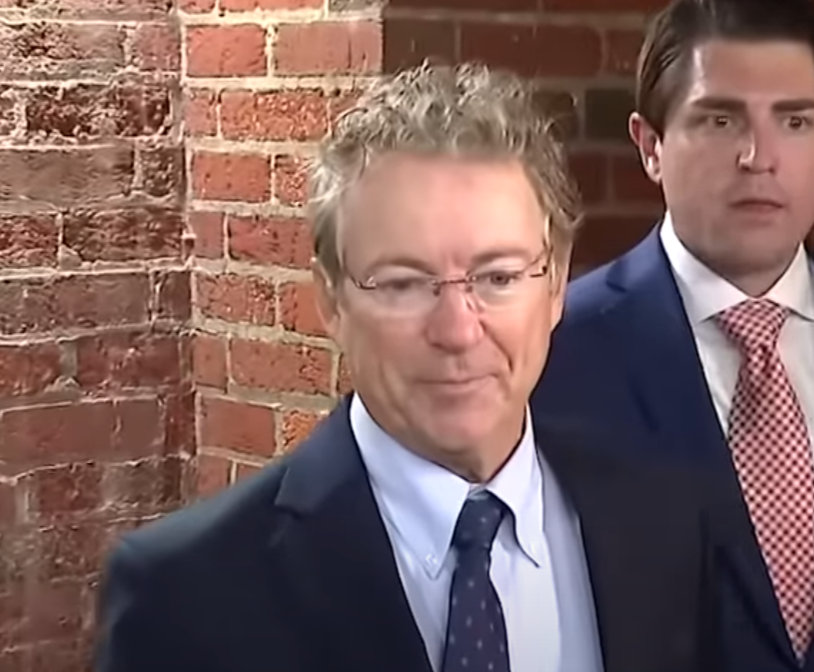While President Trump champions his “One Big Beautiful Bill” as a monumental fix for America’s financial and policy woes, a sharp rift has emerged among conservatives—this time not from Democrats, but from within the Republican Party itself.
The latest fault line? A public spat between House Speaker Mike Johnson and Kentucky Senator Rand Paul over the bill’s fiscal backbone—or, as Paul put it, its lack thereof. And what started as a disagreement over numbers has now grown into a full-blown family feud inside the GOP tent.
Johnson’s Pitch: Big, Beautiful, and Historic
Speaker Mike Johnson has gone all-in on selling Trump’s bill. Branded as a sweeping legislative reset, it combines tax reforms, spending caps, and border enforcement with an ambitious revamp of entitlement programs. According to Johnson, it’s a “moral leap forward” that returns the government to a path of fiscal sanity—without gutting essential services.
Johnson emphasized that under Trump’s leadership, the bill would cap discretionary spending, install new work requirements for Medicaid, and eliminate bloated bureaucracies—all while avoiding another debt-ceiling showdown. “This is what governing looks like,” Johnson told reporters. “It’s bold. It’s balanced. And it’s overdue.”
Rand Paul Fires Back: “Wimpy, Anemic, and Bloated”
But Senator Rand Paul, never one to mince words, sees it differently. “The cuts are wimpy and anemic,” Paul declared from the Senate floor, calling the bill a missed opportunity to enforce true fiscal discipline. His core argument? The bill does too little to reverse the unsustainable growth of the national debt—and worse, it might even increase it.
Paul’s sharpest criticisms landed on the Medicaid reforms. While the bill adds work requirements for able-bodied adults, Paul argues it doesn’t go far enough in addressing deeper structural inefficiencies. He sees the reforms as cosmetic—a political compromise rather than a serious cost-saving effort.
That said, supporters of the bill counter that these so-called “cuts” are actually a strategy to preserve Medicaid long-term. By expecting able-bodied adults to either work or participate in job training, the reforms aim to ensure Medicaid is available for the elderly, the disabled, and those truly in need—not as a lifestyle program for the capable. It’s not about slashing the safety net; it’s about tightening the eligibility so it can endure.
This is where Paul’s frustration lies. He doesn’t disagree with the idea of reform—but he believes the current approach doesn’t go far enough and lacks the urgency required to tackle America’s ballooning deficit.
What’s Actually in the Bill?
The full text of the “One Big Beautiful Bill Act” (H.R.1) has been released and is publicly available. The bill, spanning over 1,000 pages, was introduced in the House of Representatives on May 20, 2025, and passed the House on May 22, 2025, with a narrow vote of 215–214. It is currently under consideration in the Senate.
The legislation encompasses a wide array of provisions, including:
-
Tax Policy Changes: Permanent extensions of the 2017 Tax Cuts and Jobs Act provisions, increases to the standard deduction, and adjustments to tax brackets.
-
Social Programs: Implementation of stricter work requirements for Medicaid and the Supplemental Nutrition Assistance Program (SNAP), along with funding reallocations.
➤ Democrats have loudly claimed these changes “cut Medicaid.” In reality, the goal is to preserve the program for those who truly need it by discouraging able-bodied adults from relying on the safety net long-term. By requiring work or training for eligibility, these reforms aim to restore Medicaid to its intended mission—serving the elderly, the disabled, and low-income families in genuine need—not functioning as a permanent subsidy for those who could be contributing to the workforce. -
Defense and Border Security: Allocation of significant funds toward defense spending and border security measures, including the construction of barriers and enhancement of surveillance technologies.
-
Education and Student Loans: Revisions to Pell Grant eligibility, changes to student loan programs, and the introduction of new savings accounts for children.
-
Healthcare Provisions: Restrictions on Medicaid coverage for certain services and populations, along with measures aimed at reducing fraud and abuse.
For a comprehensive understanding of the bill’s contents, you can access the full text here:
🔗 H.R.1 – One Big Beautiful Bill Act
And a section-by-section summary from the House Ways and Means Committee is available here:
🔗 The One, Big, Beautiful Bill – Summary
Is Trump Losing the Fiscal Right?
This debate touches on something deeper than numbers: identity. Trump’s presidency has always been about bold action and disruption. But some longtime conservatives—especially libertarians—worry that his populist approach risks turning fiscal conservatism into a branding exercise rather than a principle.
Paul’s critique is less about loyalty and more about legacy. “If this is our big reset,” Paul said, “why does it feel like we’re just shifting deck chairs on the Titanic?”
Others in the Senate, like Mike Lee and Rick Scott, are watching closely. Some quietly agree with Paul but hesitate to fracture the party in an election year. The challenge is real: support Trump without rubber-stamping what they view as half-measures.
The Senate Wild Card
With the House already passing the bill by a razor-thin margin of 215–214, the real fight now moves to the Senate. That narrow victory underscores just how divided even the GOP-led chamber is—and how much more volatile things could get in the upper chamber.
In the Senate, the bill faces far tougher terrain. Democrats are uniformly opposed, and several Republican senators are either undecided or openly skeptical. Senators like Rand Paul, Mike Lee, and Rick Scott have voiced concern about debt levels, entitlement reforms, and whether the spending caps have any real teeth.
Democrats, meanwhile, are strategizing to offer targeted amendments that could peel off moderates or force uncomfortable votes on controversial provisions.
Bottom line: the House win was just the first battle. The Senate showdown will determine whether this bill becomes law—or becomes a wedge issue in 2026.
The Bigger Picture: Unity vs. Purity
It’s not unusual for fiscal conservatives to bristle at government spending—even under a Republican president. What’s unique this time is the tone. Instead of backroom negotiations, we’re seeing very public divisions.
Speaker Johnson and Senator Paul are both acting out of conviction—but in different directions. Johnson believes the bill will stabilize the country without political suicide. Paul believes anything less than radical reform is a betrayal of conservative values.
Both men may be right. But in the court of public opinion, it’s the conservative base that will decide who won this debate.
Final Thoughts
This bill will likely define more than just this legislative session—it could define the ideological heart of the modern GOP. Is the party still anchored in Reagan-era fiscal restraint, or is it now about pragmatic populism and winning big fights—even if the math isn’t perfect?
Trump remains the party’s lodestar, but the storm clouds within his own ranks suggest the path forward may not be as unified as it seems.
WE’D LOVE TO HEAR YOUR THOUGHTS! PLEASE COMMENT BELOW.
JIMMY
Find more articles like this at steadfastandloyal.com
h/t: Steadfast and Loyal

